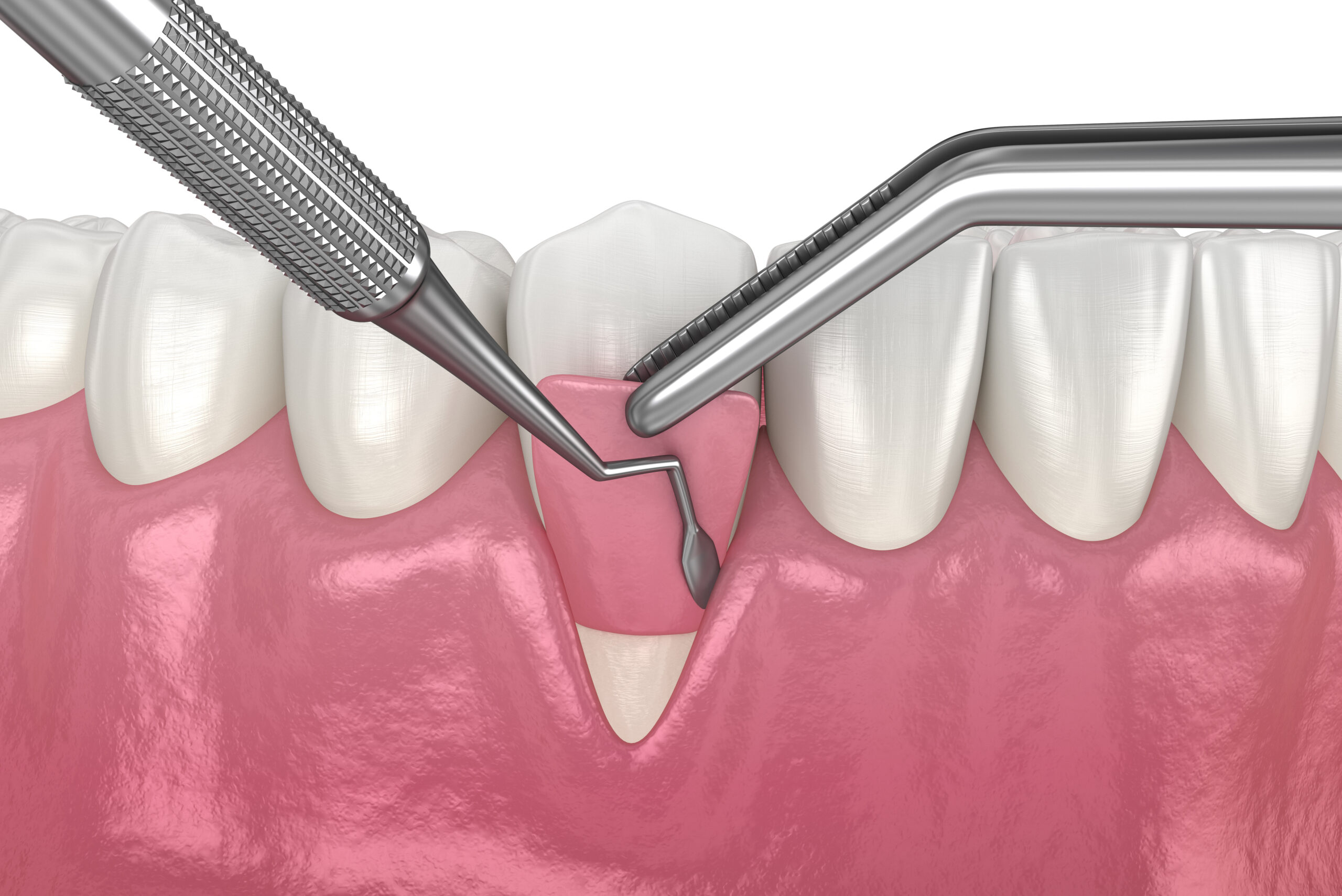Gum grafts are a type of dental surgery performed by a periodontist near you. This entails removing healthy gum tissue from one part of the mouth and transplanting it to another area where the tissue has become thinner or receded. Gum recession, which can be caused by periodontal disease, vigorous brushing, heredity, or other factors, is commonly treated with this procedure.
Although gum grafting near you is typically regarded as a safe and successful method of restoring gum tissue, there is a chance that it could fail. In this article, we’ll look at some of the potential factors that can contribute to this outcome as well as potential cures.
Reasons Why Gum Grafts Fail
Poor oral hygiene
Poor oral hygiene is one of the most frequent causes of gum grafting failure. The graft may not heal properly and can become infected if the patient does not practice good dental hygiene following the procedure, such as regular cleaning and flossing their teeth and abstaining from tobacco products.
Gum disease
Gum tissue may retreat due to gum disease, which will make it difficult for a graft to adhere. The graft could not work if the patient has untreated gum disease when the procedure is performed.
Inadequate blood supply
It’s crucial that the transplanted tissue receives an adequate blood supply for a gum graft to be successful. The graft might not survive if the blood flow is impaired.
Smoking
Smoking can hinder recovery from gum transplant surgery and raise the possibility of graft failure.
Improper technique
The gum transplant might not be successful if it isn’t performed efficiently. Using the incorrect tissue or improperly anchoring the transplant are two examples of procedure failure.
What Can be Done to Prevent or Treat Gum Graft Failures?
- Practice good oral hygiene:
It’s essential to maintain good oral hygiene in order to reduce the possibility of gum graft failure. This includes using an antiseptic mouthwash, brushing and flossing frequently and abstaining from tobacco use. - Treat gum disease:
If the patient is dealing with gingivitis or more advanced stages of gum disease, it needs to be addressed before the gum graft procedure is performed. - Follow post-surgery instructions:
It is essential to adhere to the post-surgery advice given by the dentist or periodontist, which could include using a certain mouthwash or avoiding specific foods. - Avoid smoking:
If the patient smokes, they must cease before surgery and abstain from smoking while recovering. - Re-do the graft:
If the graft fails, it could be required to repeat the treatment in some instances using a new technique or tissue donor.
In the end, gum grafting in Kelowna is a safe and effective procedure to restore the appearance of your smile. By following the above-mentioned instructions from our experts at our neighborhood dental office, you can reduce the risk of gum graft failure. It is important to discuss the benefits and drawbacks with your dentist or periodontist before and after the procedure to avoid any risks and complications.
FAQs
- Who performs gum grafts?
A periodontist, a dental specialist with specialized training in the diagnosis, prevention, and treatment of gum disease and other disorders affecting the gums and bone supporting the teeth, often performs gum grafts. In certain circumstances, a general dentist with expertise in gum grafting may also carry out the treatment. - Is gum grafting a painful procedure?
Since the area being treated is numbed with local anesthesia, gum grafting can be a rather painless process. After the operation, some patients may suffer some discomfort or soreness, but this is usually manageable with over-the-counter pain relievers and will subside in a few days. Painkillers on prescription may be advised in particular circumstances. More detailed information on what to anticipate during and after a gum grafting procedure can be received from your dentist or periodontist. - How long is recovery after a gum grafting procedure?
The duration of the healing process for each patient and the extent of the surgery will affect how long it takes for each patient to recover following a gum grafting procedure. However, the majority of patients should anticipate some swelling and discomfort in the initial days following the treatment. These side effects can be treated with over-the-counter painkillers. The gum tissue may need a few weeks to fully recover, and the graft may need a similar amount of time to acclimatize to the surrounding tissue. To monitor the healing process and make any necessary adjustments, a follow-up appointment can be required in certain situations.
Visit Okanagan Perio
To learn more consult with our expert periodontist in Kelowna and achieve a healthier and beautiful smile. Our staff is excited to work with you, so don’t wait; schedule your appointment with us today!

